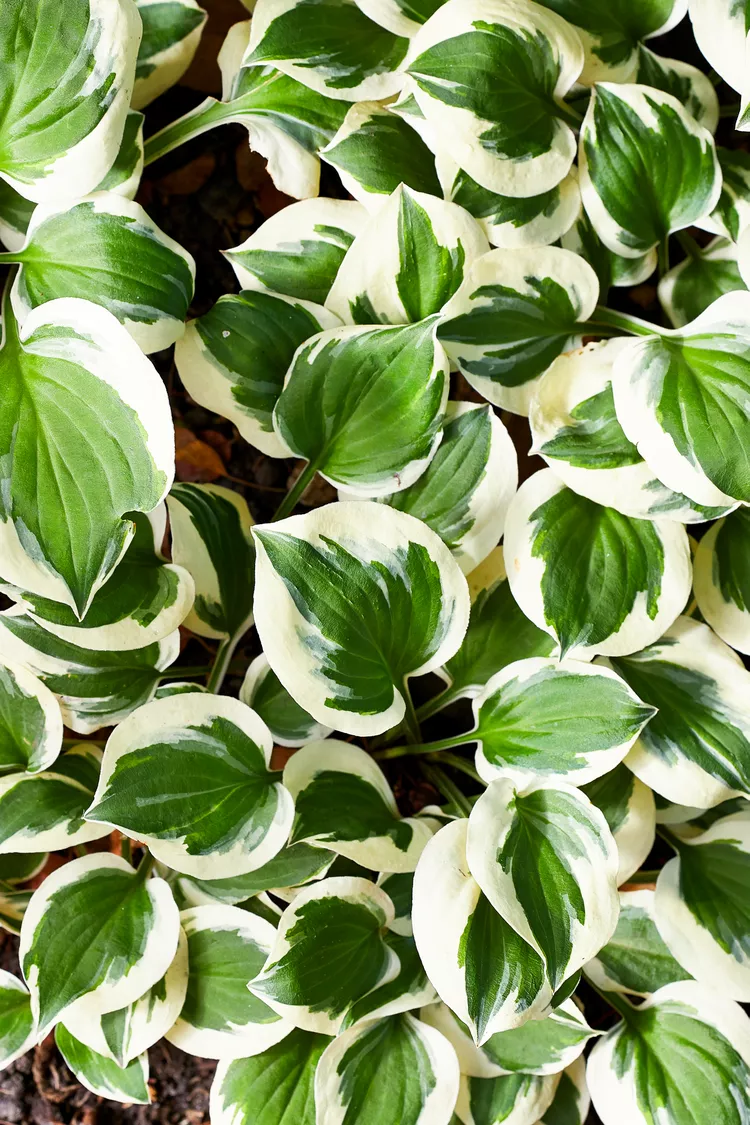Hosta plants are typically multiplied by splitting the whole clump into more plants, but you can also grow hosta from seed. This hardy shade perennial can produce hundreds of seeds each year. Sprouting these seeds in the right conditions is a low-cost way to increase your hosta plants. For example, you can use the seedlings to make a low-maintenance groundcover for large shade areas. However, the seeds will most likely result in new plants with plain green leaves rather than look like the parent plant. Follow this step-by-step guide to grow your own hosta from seed.
1. Collect seed.
After hostas bloom in mid-summer, seed pods form along the bloom stalk where the flowers once were. Each seed pod contains many hosta seeds. When the seed pods begin to lose their green color and feel slightly dry to the touch, clip the entire bloom stalk. Gently clip the seed pods off the stalk and store the pods in a single layer in an open area where they will continue to dry. In a few weeks the seed pods will dry completely and burst open to reveal tiny black seeds. Gently scrape the seeds out of the pods. Store the seeds in a cool, dry, dark spot until you are ready to plant.
2. Gather your supplies.
To start hosta from seed, you’ll need fresh potting mix. A specially formulated seed starting mix is a great choice. Hosta seeds can be started in a variety of containers—from seed starting trays to plastic drink cups. Good drainage is key to any seed starting container. If your container doesn’t have drainage holes in the bottom, add several holes so water can escape freely. Finally, light is essential for growing healthy hosta seedlings. A south-facing window can provide ample light for a small number of plants. For more consistent light, invest in a grow light.
3. Plant seeds.
Late winter is the best time to plant hosta seeds. By starting seeds about 8 weeks before the last average frost date in your area, plants will have ample time to gain size and be transplanted outside before the following winter season sets in.
Before planting seeds, thoroughly moisten the potting mix. The mix should clump together when a handful is squeezed. Scatter the seeds on top of the moistened mix and cover them with about 1/8-inch of mix. Cover the container with plastic wrap to increase the humidity around the newly planted seeds. Light isn’t necessary until the seeds germinate and the first leaves appear.
4. Give seedlings water and light.
Shortly after the first leaves appear, remove the plastic wrap. Move the seedlings to a bright location. If you are using grow lights, position the lights 4 to 5 inches above the seedlings for 18 to 24 hours per day. Water the plants as needed using a watering can with a sprinkle-type head. Aim to keep the soilless potting mix evenly moist.
Combat fungal diseases and strengthen seedlings with a tabletop fan. Position the fan near the plants. Run the fan on the lowest setting for a couple of hours a day.
5. Transplant into pots.
When seedlings are about 2 inches tall, transplant them into individual growing containers. Clean, recycled plastic garden pots work well. Continue growing seedlings under bright light until they are about 6 inches tall and have several leaves.
6. Harden off seedlings.
Hardening off is a process that helps young, tender plants growing in a controlled environment transition to harsher outdoor conditions. Blasts of wind, fluctuating temperatures, and bright sunlight can shock seedlings when they are moved directly into the garden after growing inside for weeks. Prepare hosta seedlings for the garden by moving the containers outside for a few hours a day for about a week. Place the plants in shade and a location somewhat protected from the wind. Move plants inside at night.
7. Transplant into the garden.
Hosta seedlings are ready to transplant into the garden when they are several inches tall. Hostas grow slowly; seedlings planted in late winter are often not ready to plant outside until mid- to late summer. Be sure to plant seedlings outside by early fall so they can develop a strong root system before winter weather arrives. If plants are not large enough to plant outside by early fall, keep the plants inside under grow lights until the following spring. Cover outdoor seedling hostas with straw in late fall for an extra layer of protection. Uncover plants in early spring.
Hostas, like all perennials, grow slowly at first. At the end of the first growing season, plants will be about 8 inches tall and wide. They will put on good growth the second year, expanding in height and width. Hostas started from seed reach maturity in about 4 years.




















